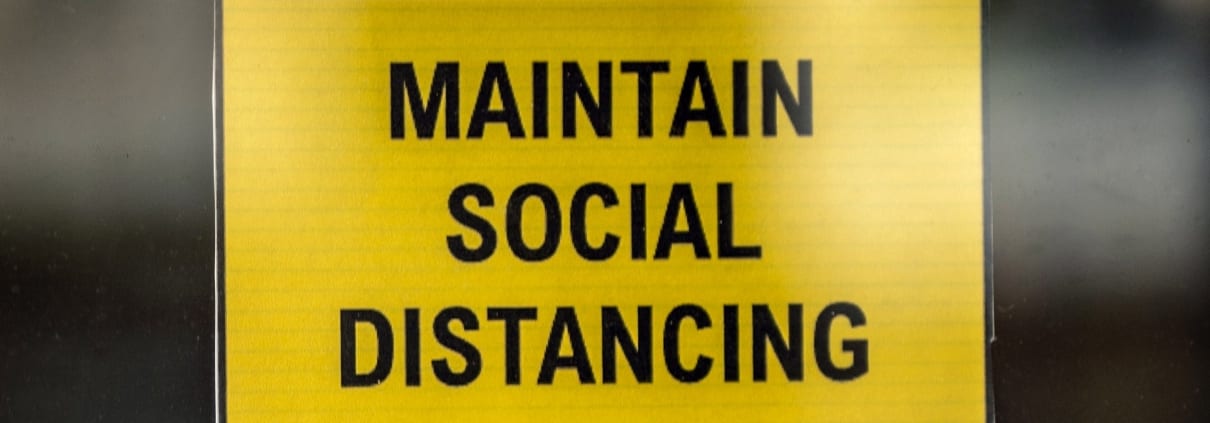Keeping your Employees Safe at Work During the Covid-19 Pandemic
COVID-19, commonly known as the Coronavirus was declared a global health emergency pandemic by the world health organisation which has spread rapidly across the world. The virus is highly contagious and can spread at a rapid rate through tiny droplets through coughing or sneezing. The most common symptoms of Coronavirus include a cough, fever, and shortness of breath. Generally, COVID 19 can cause more serious symptoms and affect those with more severe conditions such as cancer, lung disease, or diabetes. Protecting the health of all employees during the pandemic is essential in the spread of the Coronavirus within the workplace. If an employee is infected or becomes infected, then this can easily be spread to further coworkers.
The government have put in place a 4/5 stage roadmap for the reopening of businesses across the country and when the different sectors can re-open in each phase. The return to work safety protocol was published by the HSE, the department of health, by the health and safety authority, and the department of business, enterprise, and innovation. The protocol outlines the safety measures that should be taken by employees and employers for the reopening of their businesses.
Staying safe at work
Employees and employers must work together to help prevent the spread of the Coronavirus in the workplace. Employers must have the following in place:
The appropriate hygiene facilities which include hand washing facilities, hand sanitisers, masks and gloves if required.
Poster displays to raise awareness of COVID-19 which have been produced by the HSE for all businesses to use.
- Provide tissues as well as bin bags and bins for employees to dispose of correctly.
- Proper ventilation
- Offer advice on good respiratory practice
- Bins should be emptied regularly
- Regular cleaning of your premises
- Personal protective equipment and clothing if required
- Physical distancing of at least 2 metres across all work activities.
- Keep a logbook of any group work on the premises
- Provide staff with a covid-19 training course if needed
Physical/Social distancing
Physical distancing measures must be put in place across every business. The measures include the following:
- Signage placed across the premises outlining COVID-19 and staying 2 metres apart.
- Setting up of barriers and screens at desks or checkouts where possible
- No shaking of hands or close contact
- Contactless payment methods are preferred
- Carry out a risk assessment and the steps that should be taken if an employee has been in contact with an infected person.
- Employees should consider wearing protective clothing and equipment.
- Cancel or reduce non-essential travel and work from home if and where possible
- Allocate different times for appointments, deliveries, and collections
- Reduce worker numbers by allocating different shifts
- Remove some chairs and tables from the canteen in ways of reducing the number of staff to a table.
The appropriate cleaning products
The disease control and prevention centre advises the use of correct cleaning products which can kill the virus and deep cleaning the workplace. Use ready to use disinfectant sprays and wipes to clean germs off surfaces, therefore, reducing the spread of the virus. While soap and water are just as effective, the use of approved disinfectants gives you more assurance that your premises are disinfected properly. This is also showing you are taking your employees’ safety very serious. Having your premises disinfected by a Certified ULV Covid-19 fogging expert is another safety measure to safeguard your employees and customers.
Common areas to clean/disinfect
Every business should determine the areas that need to be cleaned and how frequently they need to be disinfected. The most frequently touched objects and surfaces that would need routine cleaning and disinfecting include:
- Doorknobs
- Handles
- Countertops
- Tables
- Desks
- Toilets
- Sinks and faucets
- Touch screens
- Light switches
- Keyboards
- Phones
Develop handwashing, cleaning, and hygiene procedures
All businesses should increase the frequency of hand washing and surface cleaning around the premise by:
- Encourage employees to follow the guidance on hygiene and hand washing
- Provide hand sanitiser around the premise’s floors, in addition to the toilet rooms
- Surfaces and objects that are touched regularly should be cleaned and disinfected frequently
- Set up guidance on hand washing after using the toilets
- Hand drying facilities such as hand dryers or paper towels should be available
- The wearing of face masks/coverings for workers and customers are another safety measure
2 metre workspace distance
Where possible 2 metres must be maintained between employees in the workspace. Not that this may change to 1 metre as we go through the reopening phases.
- Workstations should be avoided
- Have a One-way system if were possible through the workspace
- Place 2 metre distance signs around the floor highlighting to people to keep 2 metres apart
- It is essential to have Covid-19 guidance signs
- Any visitors should be by appointment only in some sectors



